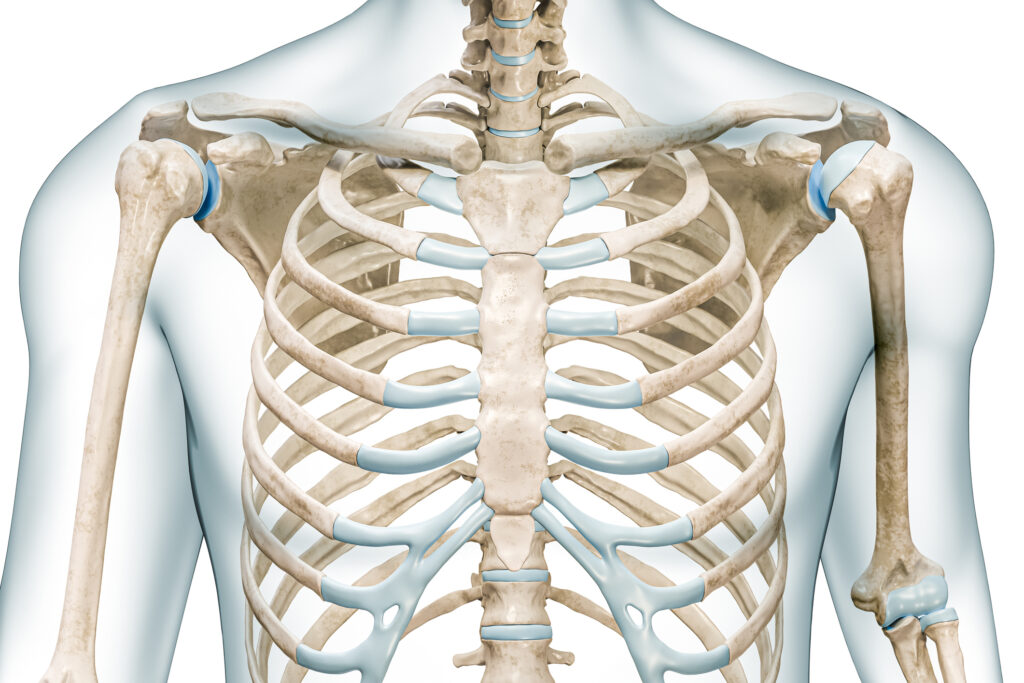Intercostal Nerve Radiofequency or Cryoablation
Intercostal nerve ablation is a minimally invasive procedure designed to manage chronic chest wall pain, often caused by rib fractures, nerve irritation, or post-surgical pain. By disrupting the pain signals from the intercostal nerves—located between the ribs—this treatment helps patients find relief when other therapies haven’t worked. Both radiofrequency (heat) and cryoablation (cold) methods can be used, depending on the nature and location of the pain.
The procedure is performed on an outpatient basis and allows for targeted relief without the need for systemic medication or more invasive interventions. Many patients experience significant improvement in both pain levels and mobility.

What is it?
This procedure treats chronic chest wall pain by using either heat (radiofrequency) or cold (cryoablation) to interrupt pain signals from the intercostal nerves.
How is it performed?
Under fluoroscopic guidance, special probes are positioned near the affected intercostal nerves. The procedure takes 30-45 minutes, depending on how many levels are treated.
Keypoint #1-Lorem Ipsum
Lorem Ipsum mon fringilla dolor felis amet fusce.
• Libero auctor
• Enim molestie iaculis
• Massa bibendum
• Ultrices varius
Metus euismod tellus penatibus in ex morbi euismod mollis.
Phasellus venenatis augue luctus sollicitudin elementum suspendisse.
Treatment Benefits
Intercostal nerve ablation can provide long-lasting relief for chest wall pain by addressing the source of nerve irritation directly. It reduces or eliminates the need for ongoing medications, improves breathing comfort, and enhances activity tolerance. Because it’s minimally invasive, most patients experience minimal downtime and a relatively quick return to normal activities.
Who Can Benefit From This Treatment
This procedure is often recommended for individuals with persistent chest pain following trauma, thoracic surgery, or nerve-related conditions such as postherpetic neuralgia. It’s also helpful for patients with rib-related pain that hasn’t responded to conservative treatments. A detailed evaluation will help determine whether radiofrequency or cryoablation is the best option for your specific case.
Learn more about Intercostal Nerve Radiofrequency or Cryoablation by contacting the Minimally Invasive Spine and Pain Institute—our team is here to help you explore your options.
Aftercare for Intercostal Nerve Radiofrequency or Cryoablation
After the procedure, it’s common to experience mild soreness, numbness, or bruising at the treatment site. These effects are usually temporary and resolve within a few days. Some patients notice immediate relief, while others may feel gradual improvement as the nerves respond to treatment. Because this procedure is minimally invasive, most patients are able to return to light activities shortly after.
Tips for a Smooth Recovery
Follow these guidelines to support healing after intercostal nerve radiofrequency or cryoablation:
- Avoid heavy lifting or strenuous upper body movement for 24–48 hours
- Use ice packs to reduce localized discomfort at the treatment site
- Maintain good posture and gentle movement to prevent stiffness
- Refrain from applying heat to the area for the first day after treatment
- Contact your provider if you experience persistent pain, redness, or swelling

